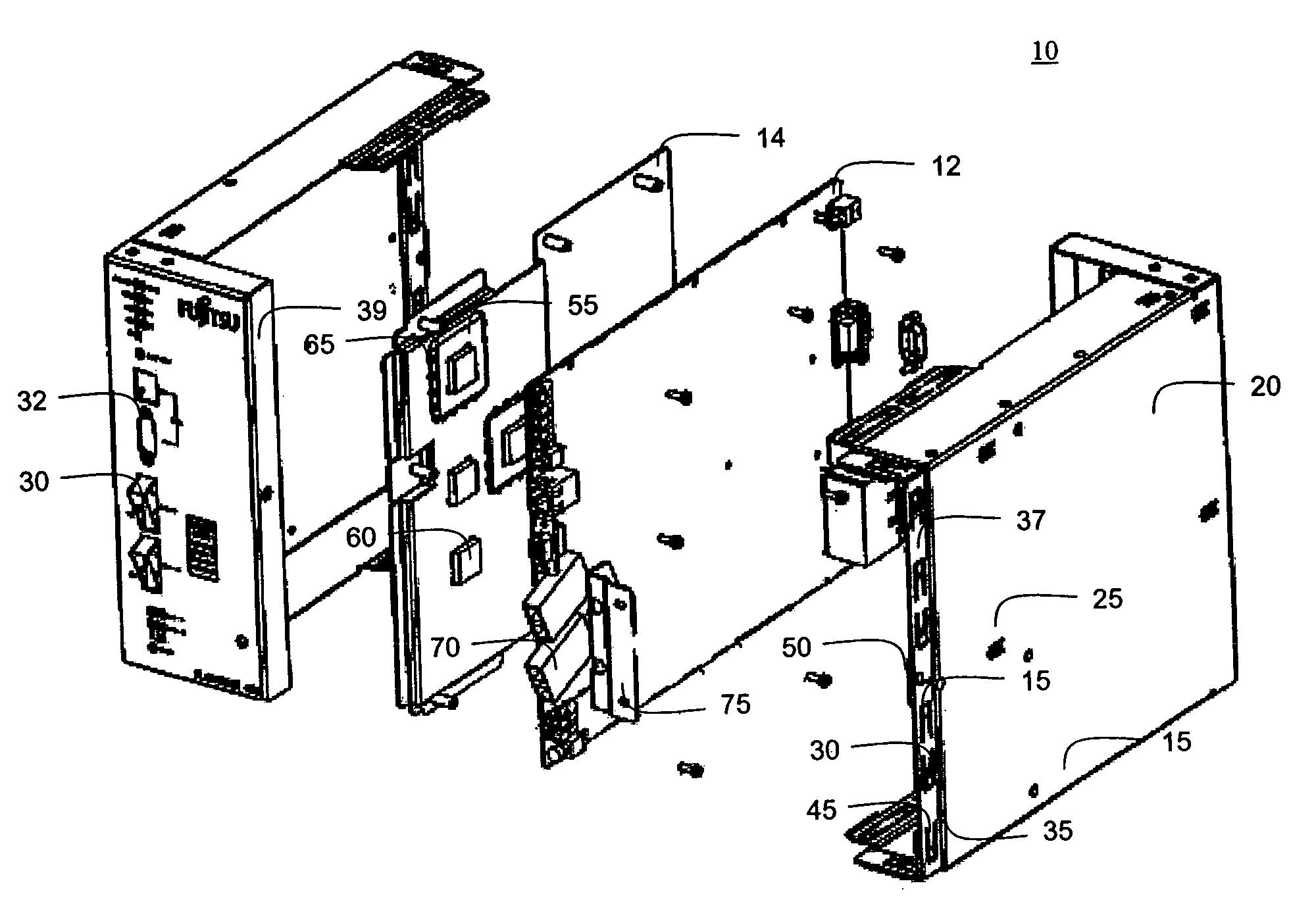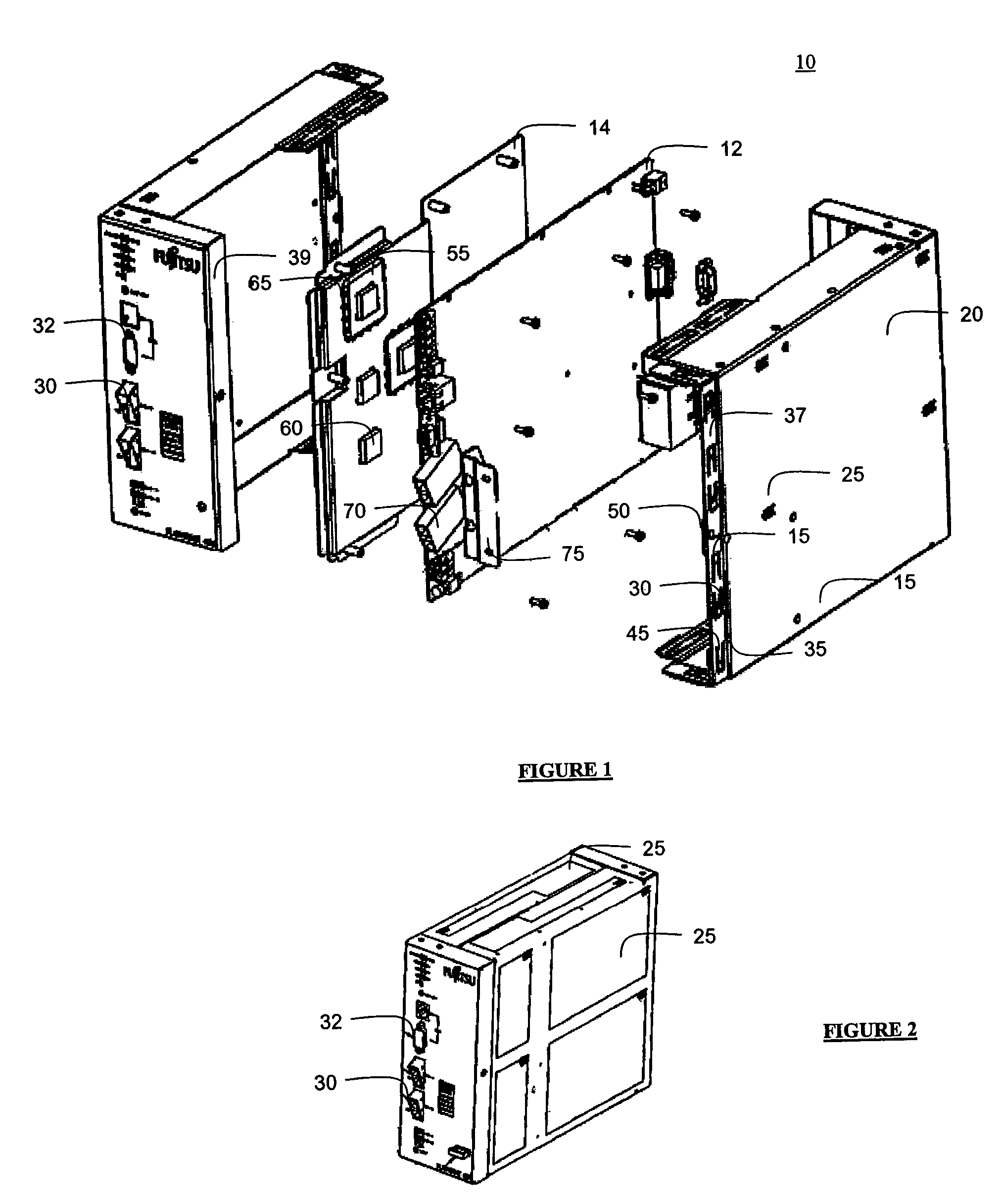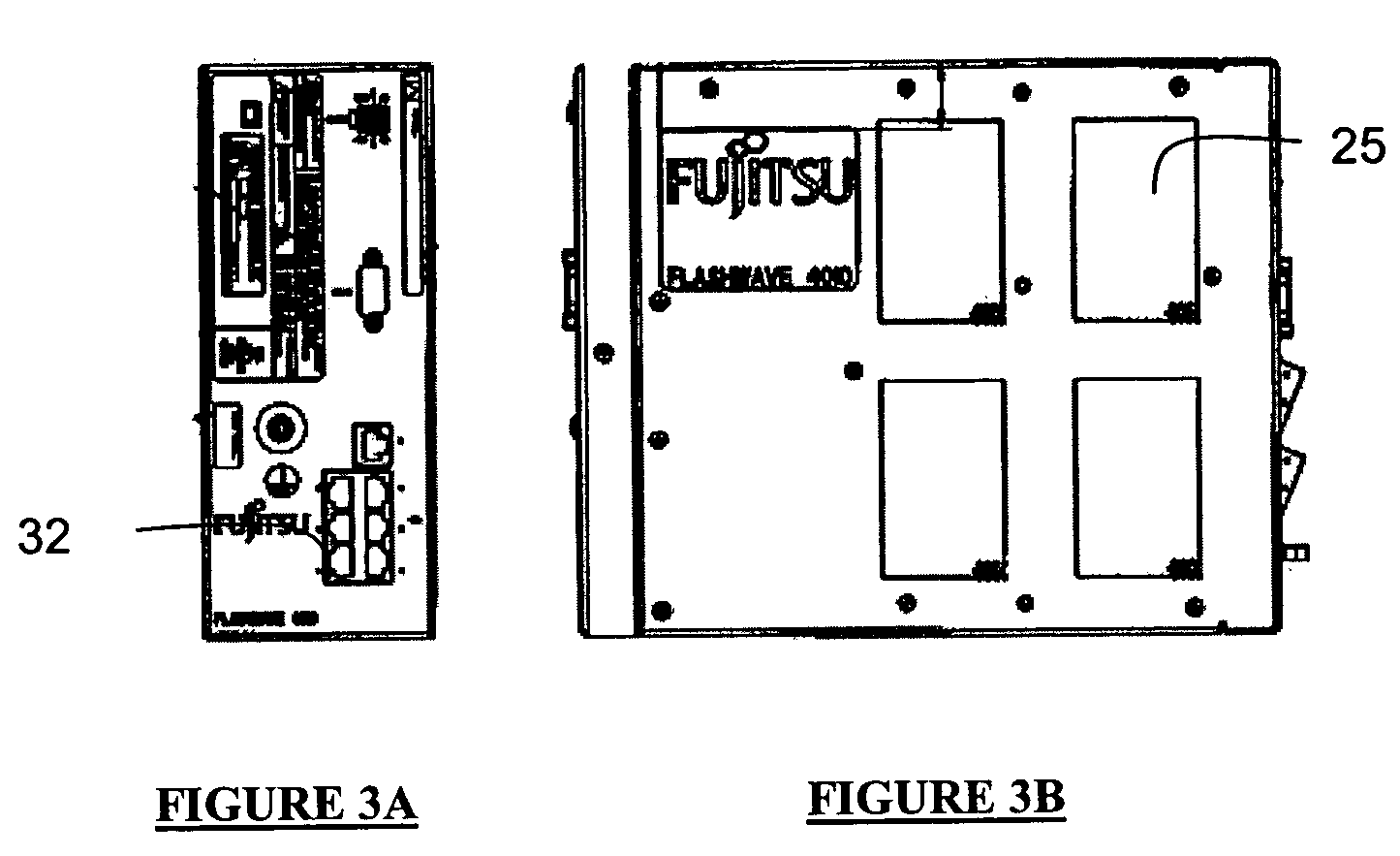Heat dissipating housing with interlocking chamfers and ESD resistance
a heat dissipation housing and interlocking chamfer technology, applied in the direction of sliding card holders, lighting and heating apparatus, electrical apparatus contruction details, etc., can solve the problems of large amount of functionality, damage or destruction of the system itself, and inability to be reliable, etc., to facilitate heat transfer, good heat conduction properties, and inexpensive manufacturing through stamping
- Summary
- Abstract
- Description
- Claims
- Application Information
AI Technical Summary
Benefits of technology
Problems solved by technology
Method used
Image
Examples
Embodiment Construction
[0016]According to an embodiment of the present invention, a system is designed to facilitate heat transfer via radiation, convection and conduction from components within the system to the external environment and housing. The system includes a thermally conductive plate positioned between a surface of the housing and one or more heat generating components within the housing. The plate may include raised areas for mating with heat generating components directly or through a pad comprising complaint, thermally conductive material. The housing may include perforations covering a substantial portion of its surface area to permit air to enter the housing and cool the plate. The housing may be made of a material with good heat conduction properties, such as aluminum, and may be thermally coupled to certain temperature sensitive components within the housing for temperature regulation. The housing may be inexpensively manufactured through stamping and may include two mating pieces which ...
PUM
 Login to View More
Login to View More Abstract
Description
Claims
Application Information
 Login to View More
Login to View More - R&D
- Intellectual Property
- Life Sciences
- Materials
- Tech Scout
- Unparalleled Data Quality
- Higher Quality Content
- 60% Fewer Hallucinations
Browse by: Latest US Patents, China's latest patents, Technical Efficacy Thesaurus, Application Domain, Technology Topic, Popular Technical Reports.
© 2025 PatSnap. All rights reserved.Legal|Privacy policy|Modern Slavery Act Transparency Statement|Sitemap|About US| Contact US: help@patsnap.com



